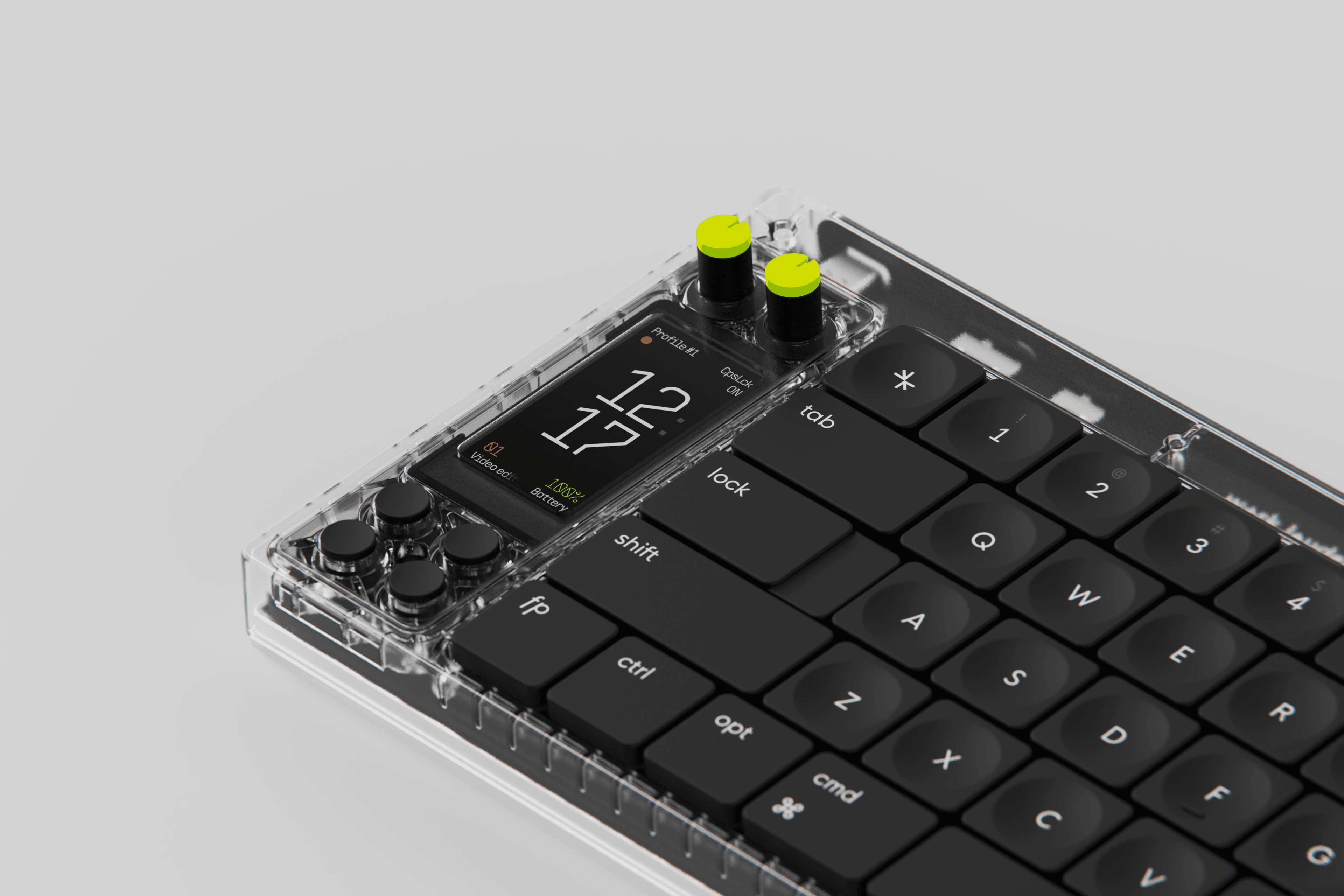
Nomad E Keyboard
About the project
Work Louder makes products for people, inspired by a version of themselves sometimes forgotten - playful, versatile, and above all else, creative. They believe people who do their best work when it doesn’t feel like work at all - when it’s all work & -no- play.
Our latest keyboard the Nomad E was created to address the problem of overstimulation in the modern work environment. As someone who works from home, and has been diagnosed with ADHD I've always found it difficult to get in the zone and stay there. I discovered the Pomodoro method, which really helped me, but I didn't like the app based solutions as the phone was still a source of distraction, and didn't want to have a physical timer on my already small desk.
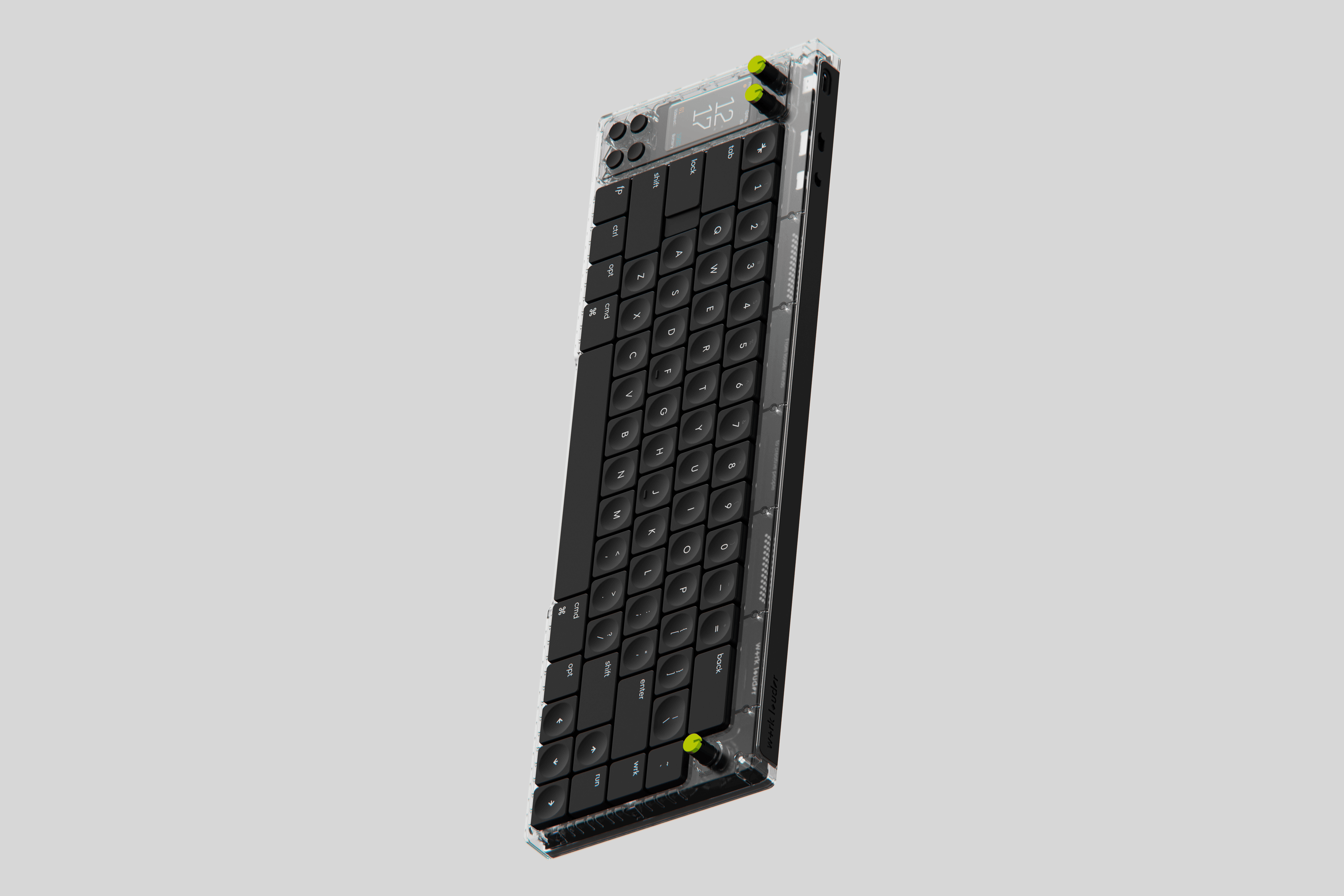
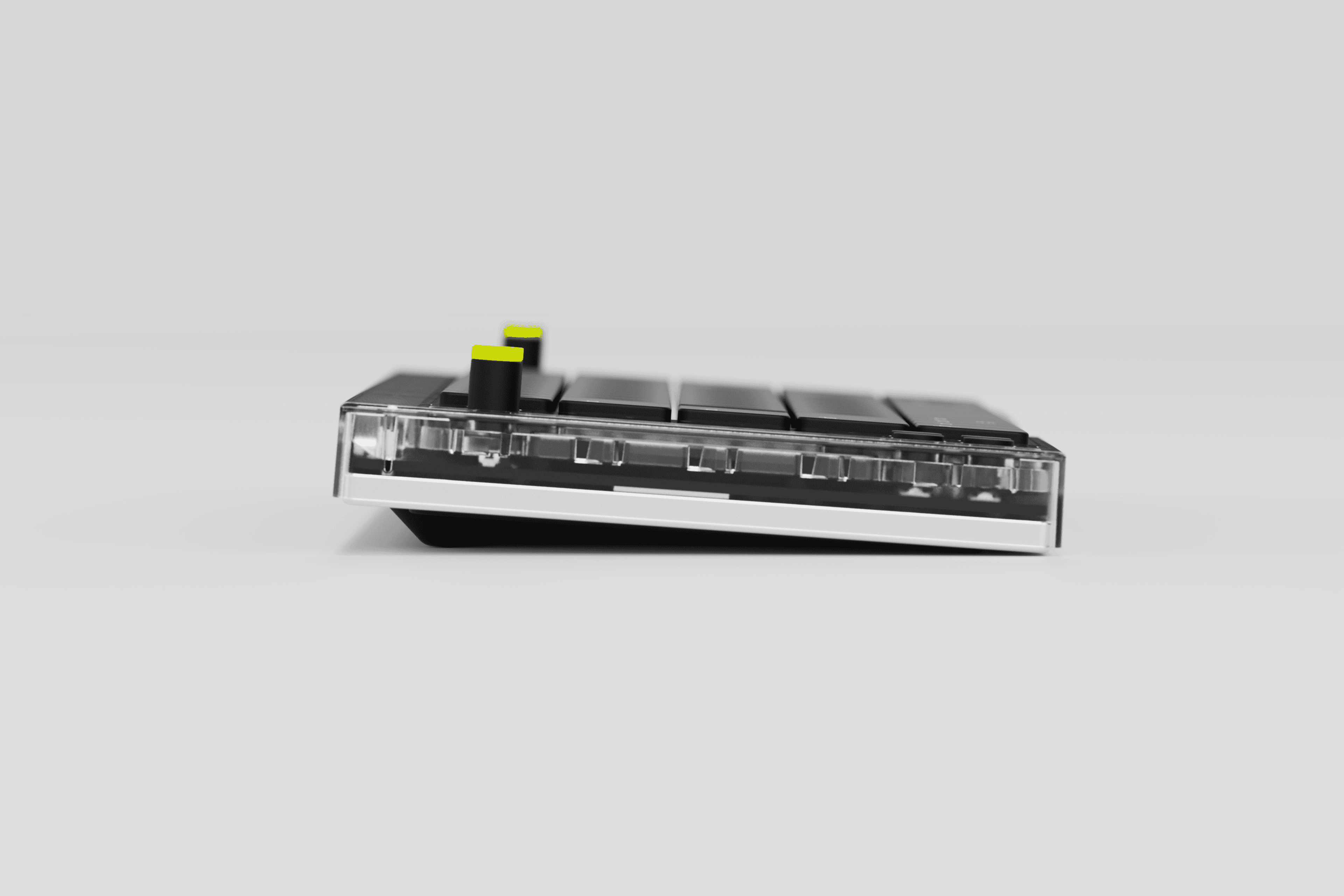
What sparked this project?
Mattia and I met online via the Instagram explore page. Mattia was working on a personal project he was calling the Creator Board, and I just fell in love with the concept as I was looking for a tool that could help me with productivity. We made a tiktok about it here:
Who was on the team for the project?
Michael Di Genova - Creative Director/Marketing
Mattia Caramel - Industrial Designer
Do you have some project metrics to share?
We started with $2000 of our own money and a render, and have been growing the business ever since. For the Nomad E keyboard, we did over 100hrs of UX discovery calls with potential customers (mainly graphic designers, videographers, and developers) to identify their pain points. We ended up realizing the problem of overstimulation in the workplace was only worsened by COVID, and we spent just short of a year researching and designing the Nomad E. On the launch of our Kickstarter we were 635% funded in 3 minutes, and in 30 days raised +$500K between our website and the Kickstarter campaign.
What is your approach to working on a project like this? Do you follow a specific process or framework?
I think people put "process" on a pedestal. Everyone wants a blueprint to how to make "the thing". The truth is you need to be good at both identifying opportunity and then acting on that in the lifespan of the opportunity - process means nothing if you aren't good at those two things first. Its important to have goals, and a direction, but our "process" is we make hypotheses about what we think the market wants based off of many interactions with our target audience and we go from there - iterating, and spinning off developments on the fly. When you are a small startup speed and flexibility is your biggest strength - focusing on the process is literally opposite to the inherent strengths of a small business.
What did the early versions of this project look like? What did you learn from this v1?
Many customers had been asking for us to put a display on the original Creator Board, but we didn't really know why. Some went out of their way to literally do it themselves. We had been also seeing many videos of DIY devices on IG/TT that would have a screen but simply to show a gif of their favorite anime character, or a little dog reacting to their typing speed.
We knew from all this first hand data that there was something there, but the goal was to try and understand if the display could have real utility, or if it was just a "joy" feature. This is were we started to interview customers, and potential customers, about their workflow. Some of the questions we asked were as simple as walking us through them making edits, or adjusting code. We even asked for them to take a photo of their desk while in the meeting, just so we could see what the environment looked like without time to clean it up.
We used this early information to create more versions. Although the V1 shares a lot of similarities to the final version, the biggest thing we missed in the first draft was the fact people don't have a lot of room on their desks and so we needed to make it smaller and more compact.
'You need to be good at both identifying opportunity and then acting on that in the lifespan of the opportunity.'
What was the biggest challenge? Did any part of the project make you step out of your comfort zone?
The biggest challenge for us was the Kickstarter campaign and prep. It was the first time we were really trying to make our marketing "serious" as we used a very personal, but ultimately informal marketing strategy on Tiktok to grow to where we could quit our other jobs and just focus on work louder. It was also the first time we did a truly concerted marketing campaign over 3 months that successfully/intentionally raised hype about a product launch and lead it to be a successful campaign.

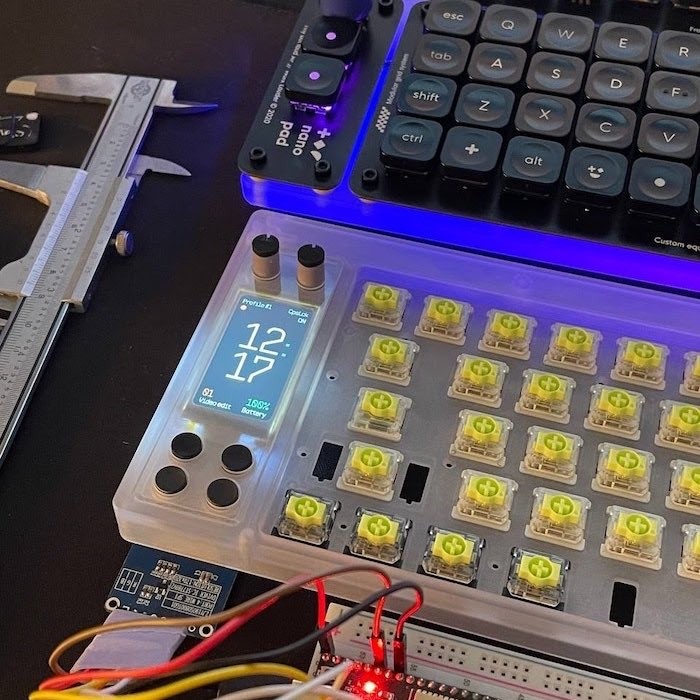
How did you overcome this challenge?
Looked at what some other larger brands did for their product launches, and made a timeline from analyzing their post frequency, and the kind of content that was being release. We then hired people we trusted to come through on tasks we were not able to do ourselves, and pushed through to make our launch deadline.
What and/or who inspired you during the creation of this project?
We get inspiration from all over, everything from early customer made DIY projects, to large companies like Apple who show an absolute mastery of design, software and execution.
What was your biggest learning or take-away from creating this project?
Team work makes the dream work.
Can you point out a detail in the project that might go unnoticed but you’re particularly proud of?
On the surface of the printed circuit board, which most will never be seen by most, since you would have to disassemble the board to see it, we wrote what we believe in:
"Products for people, inspired by a version of themselves sometimes forgotten - playful, versatile, and above all else, creative. We believe people do their best work when it doesn’t feel like work at all - when it’s all work & ̶n̶o̶ play."
'One of the things people were most happy about is that we actually listened and implemented *a lot* of the feedback that was given to us.'
Which part of this project consumed the most time or energy?
Since this keyboard is our first injection molded case keyboard, we spent a ridiculous amount of time going over all the molded components since we only get one shot at making them correctly. Mattia is also a self-taught industrial designer, so it was really important for him to learn the standards of mold making to be able to create 3D models that could be used at large scale.
What was the result of this project?
We were met with an overwhelmingly positive reaction for the Nomad E. One of the things people were most happy about is that we actually listened and implemented *a lot* of the feedback that was given to us. Even after the closing of the Kickstarter campaign we received comments about the battery size, or available layouts, and we modified the design accordingly. This kind of attitude is not commonly seen with companies unfortunately, but it benefits the community and company greatly when feedback is taken seriously.
Where was the project created? What do you enjoy about working there?
The Nomad E was technically designed in Italy, but promoted from Canada - since I live in Montreal, Canada, and Mattia lives in Venice, Italy.
I work and create content from a little desk (48") in my condo. I love Montreal for all the creative people that live here, and how diverse the city is - also the fooood😌👌
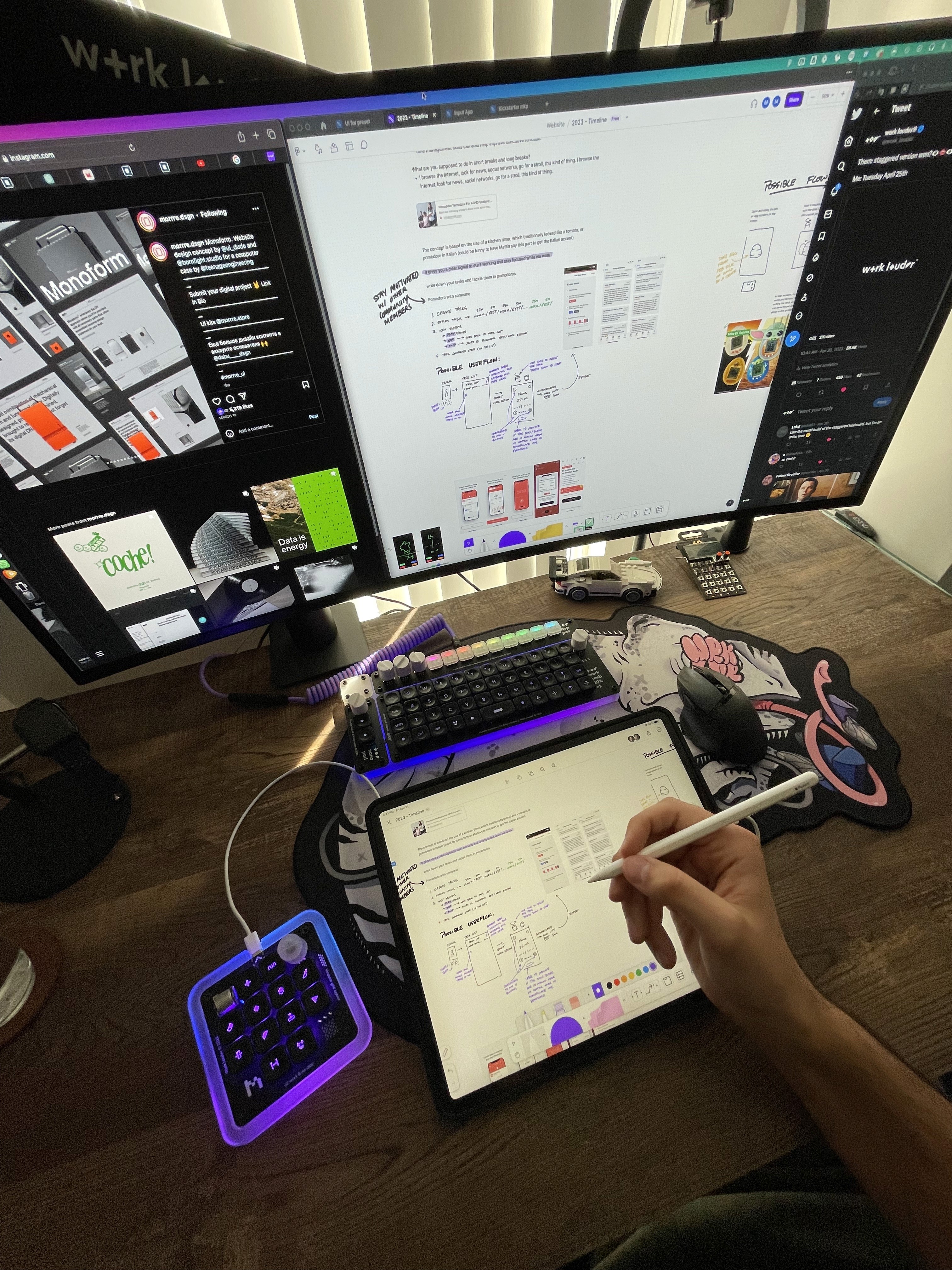
Workspace
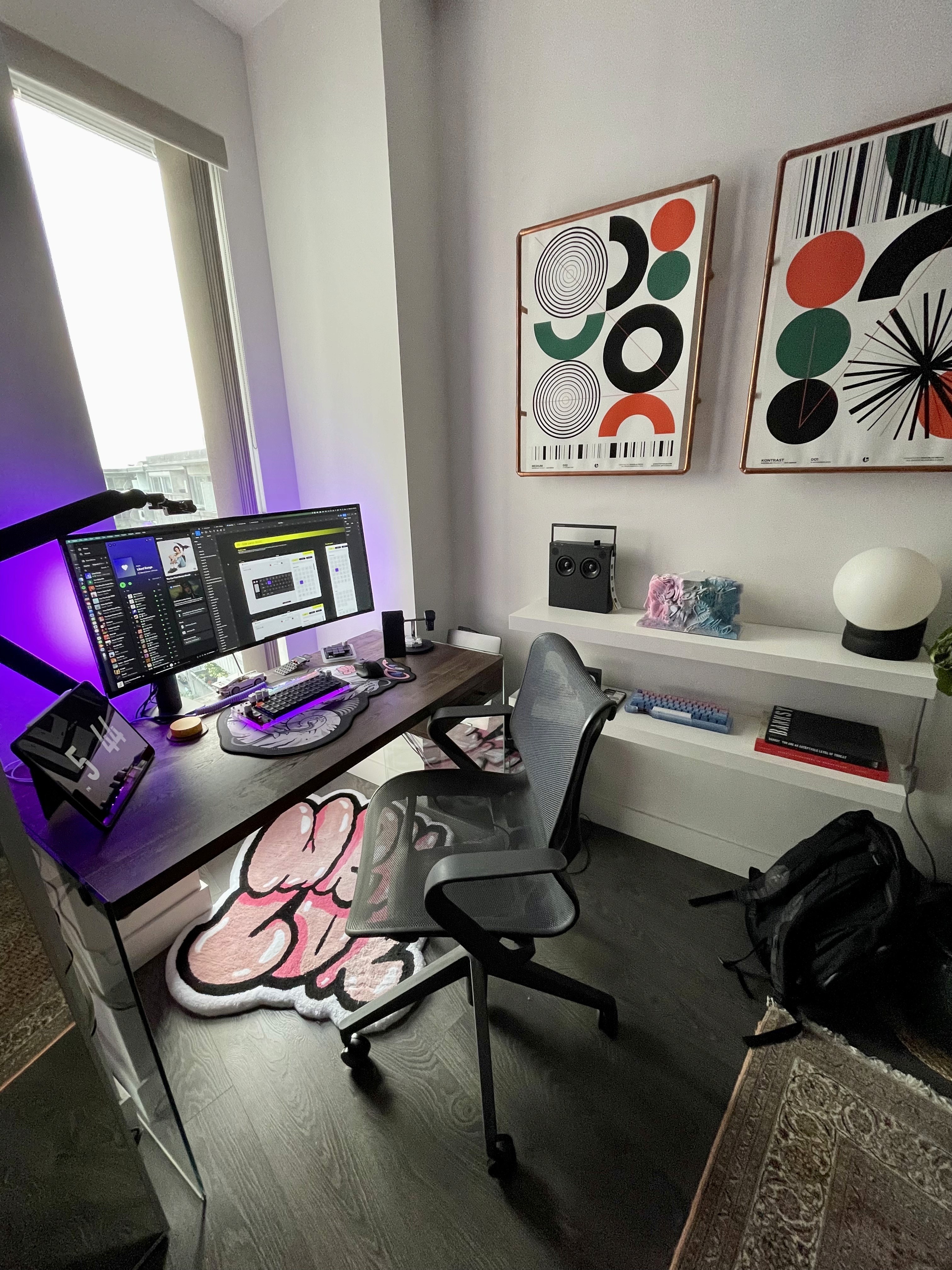
If this project had a soundtrack, which one would it be?
Which tools did you use to create this project?
Rhino - modelling and industrial design
Keyshot - rendering and product photography
FigJam by Figma - ideation and planning
DaVinci Resolve - launch video editing
Twitter/Tiktok/Instagram - organic marketing (in that order)
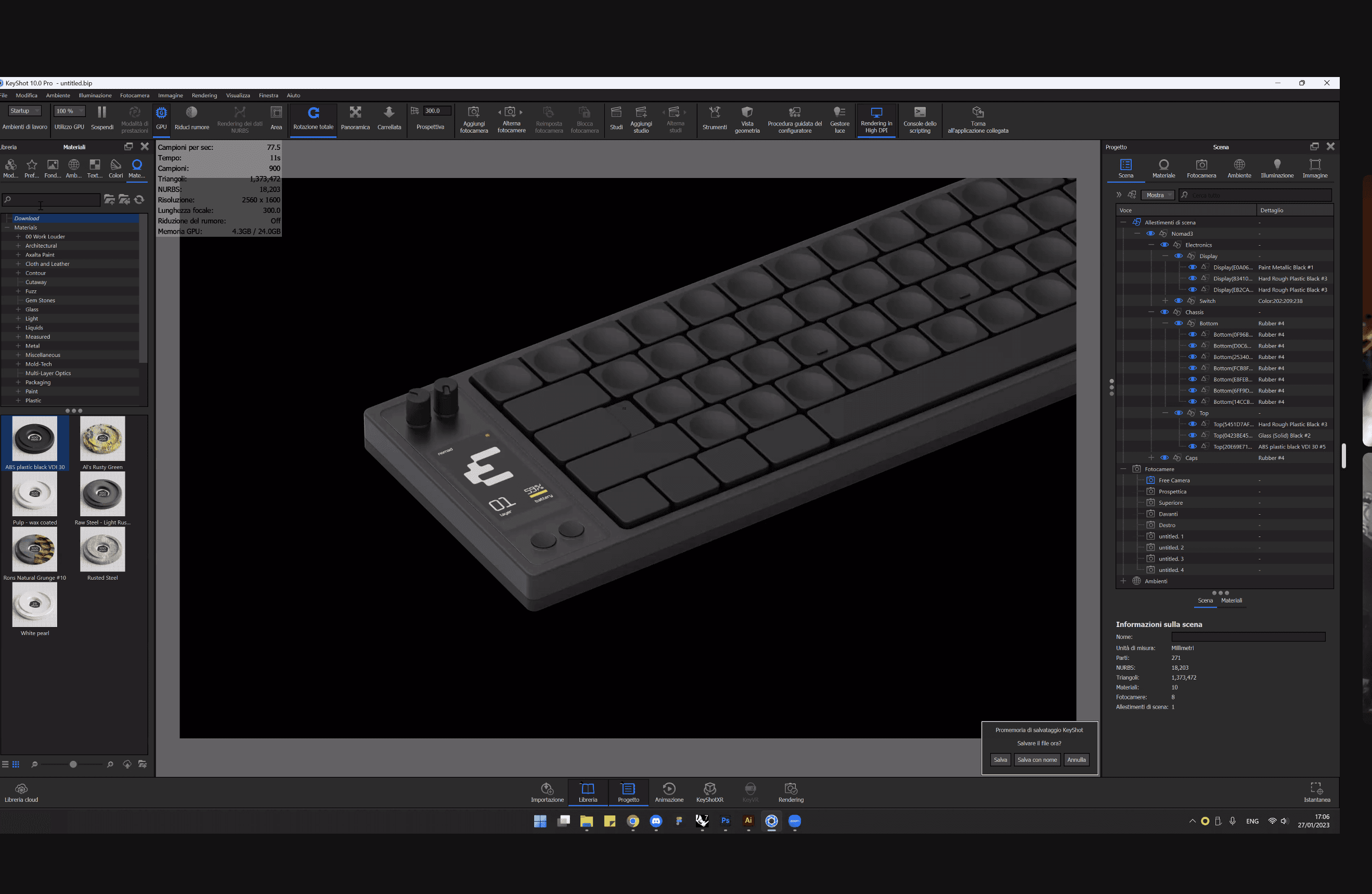
What are you currently working on, and what's next?
We're busy working on executing the software, and manufacturing of the Nomad E. This month we are going to China to review current manufacturers in our supply chain and oversee the production of some of our current products. Previously we were assembling the products ourselves in Canada, but we're at a scale where that is no longer manageable, so we are going to be setting up our manufacturing partners in China to take on this role for us.
Who or what are you inspired by lately? Any current influences that you find are seeping into your work
90s tech is definitely influencing our work. It was just so playful and tactile - something that has been lost in our world of minimal glass rectangles and virtual art.
If you could give your younger self one piece of advice about navigating the design world, what would it be?
Design more at night. No one will bother you, and there's no pressure to be productive, or even good at what you are doing. Just try, you'll get better eventually, and if not, it was way past your bedtime anyways.
From the maker






